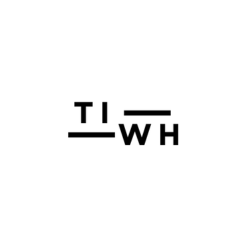It’s been a rollercoaster year for the U.S. semiconductor sector — an industry sitting at the center of the global AI race and a focal point of U.S. economic and political strategy.
From Intel’s leadership shakeups under new CEO Lip-Bu Tan, to the Biden and Trump administrations’ dueling approaches to chip export controls, to record-breaking earnings at Nvidia, the past eight months have underscored how turbulent and consequential 2025 has been for the chip market.
Related: What The UK’s Semiconductor Strategy Is Still Missing
Here’s a month-by-month breakdown of the biggest developments:
August
- Nvidia reports record quarter (Aug 27): Nvidia’s data center business soared, posting a 56% year-over-year revenue increase.
- U.S. government takes 10% stake in Intel (Aug 22): Washington converted grants into equity, tying penalties to Intel’s foundry ownership.
- SoftBank invests $2B in Intel (Aug 18): Masayoshi Son called it a “strategic” move, announced just ahead of U.S. stake news.
- Nvidia & AMD regain China access (Aug 12): Both companies struck a deal with regulators to sell AI chips in China by giving 15% of revenue back to the U.S. government.
- Intel CEO meets Trump (Aug 11): Lip-Bu Tan and President Trump discussed U.S. manufacturing. Days earlier, Trump demanded Tan’s resignation over alleged conflicts of interest (Aug 7).
- Tariff threats (Aug 5): Trump floated new semiconductor tariffs on CNBC but, as of Sept 5, none have been implemented.
July
- Intel spins out Network & Edge unit (Jul 25): The $5.8B telecom-focused division was separated.
- Manufacturing pullback (Jul 24): Intel scrapped projects in Germany and Poland, consolidating operations and targeting 75,000 employees by year-end.
- Trump’s AI Action Plan (Jul 23): Sweeping orders on AI chips and export coordination, but light on details.
- UAE AI chip deal stalls (Jul 17): A multibillion-dollar Nvidia deal paused over U.S. national security fears.
- China trade maneuvering (Jul 16–14): Nvidia applied to restart Chinese H20 chip sales; Malaysia tightened export oversight.
June
- Intel reshuffles leadership (Jun 18): High-profile engineering hires marked Tan’s “engineering-first” push.
- Layoffs hit Intel Foundry (Jun 17): Up to 20% of staff cut.
- Nvidia drops China forecasts (Jun 13): CEO Jensen Huang said the market won’t be included in revenue outlooks.
- AMD acquisitions (Jun 4–6): Picked up Untether AI’s team and startup Brium to compete with Nvidia’s hardware ecosystem.
May
- Nvidia export-hit losses (May 28): Reported $4.5B in Q1 charges, forecasting an $8B Q2 impact.
- AMD shopping spree (May 28): Acquired photonics startup Enosemi.
- U.S.–China tensions flare (May 21): Beijing threatened legal action over U.S. guidance against Huawei chip use.
- Intel restructuring rumors (May 20): Reports emerged of plans to offload non-core business units.
- Biden’s AI Diffusion Rule scrapped (May 13): Commerce Department rescinded just days before enforcement.
April
- Anthropic backs tougher restrictions (Apr 30): CEO Dario Amodei pressed for stricter enforcement.
- Intel layoffs announced (Apr 22): 21,000+ job cuts to streamline management.
- Trump administration tightens exports (Apr 15): Nvidia’s H20 chip hit with new licensing requirements.
- Intel–TSMC joint venture rumors (Apr 3): Tentative talks for a shared chipmaking venture.
March
- Intel appoints Lip-Bu Tan CEO (Mar 12): The industry veteran vowed to make Intel an engineering-first company.
February
- Ohio chip plant delayed again (Feb 28): Intel’s $28B fab pushed back to 2030–31.
- Senators push tougher export rules (Feb 3): Bipartisan letter urged tighter controls on Nvidia’s H20 chips.
January
- China’s DeepSeek shakes market (Jan 27): Release of the R1 reasoning model rattled U.S. firms.
- Biden’s export order (Jan 13): Proposed sweeping chip export rules, introducing a three-tiered structure.
- Anthropic supports restrictions (Jan 6): Dario Amodei called for closing loopholes and tightening U.S. chip controls.






